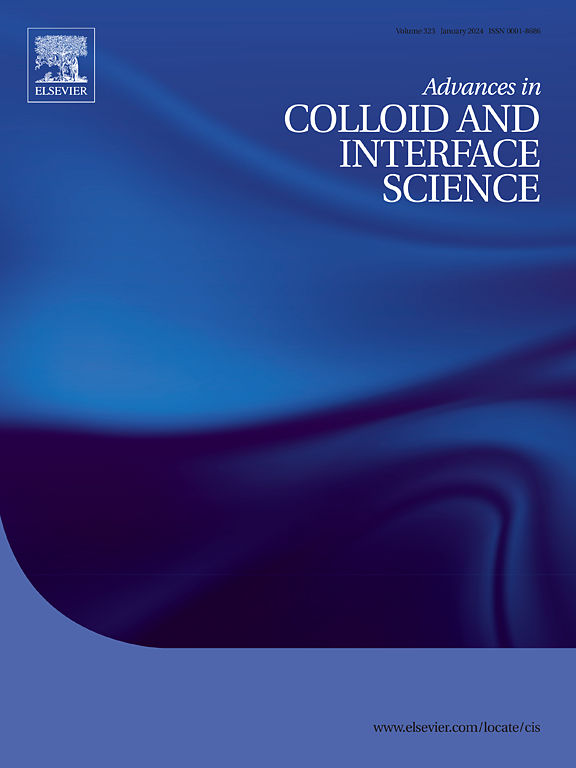用于开发杀菌材料的阳离子抗菌聚合物:策略、机制和应用
IF 19.3
1区 化学
Q1 CHEMISTRY, PHYSICAL
引用次数: 0
摘要
在过去的几十年里,抗生素的全球消费极大地加剧了抗生素耐药性的挑战。因此,人们对开发新的非抗生素抗菌剂作为传统抗菌药的替代品产生了极大的兴趣,这种抗菌剂可以表现出延长作用时间、增强疗效和降低毒性。在各种抗菌剂中,阳离子抗菌聚合物(cap)因其含有大量带正电荷的基团或片段,使其能够与微生物的带负电荷的表面有效地相互作用,从而抑制微生物的生长而特别引人注目。本文首先综述了高分子聚合物的不同类型和特点,包括季铵盐(QAS)聚合物、胍盐(GS)聚合物和季磷盐(QPS)聚合物,包括天然聚合物和合成聚合物。随后,进一步讨论了CAPs的抗菌机制,包括静电相互作用、细胞膜损伤、蛋白质沉淀和DNA损伤,并指出这些机制的协同作用赋予了CAPs强大的抗菌能力。此外,本文还广泛讨论了cap在纺织、医疗、食品包装和水处理等关键领域的应用,并确定了当前面临的挑战,如耐药性的发展、对环境的影响和潜在的生物毒性。此外,本文还对不同聚合物作为底物组合的各种cap抗菌活性的最新文献进行了综述,并为探索各种应用的新型非抗生素抗菌剂提供了未来的研究方向。本文章由计算机程序翻译,如有差异,请以英文原文为准。

Cationic antibacterial polymers for development of bactericidal materials: Strategies, mechanisms, and applications
The worldwide consumption of antibiotics has significantly contributed to the escalating challenge of antibiotic resistance over the past decades. Therefore, there is a tremendous interest in the development of new non-antibiotic antibacterial agents as alternatives to traditional antimicrobial drugs, which could exhibit prolonged action, enhanced efficacy, and reduced toxicity. Among various antibacterial agents, cationic antibacterial polymers (CAPs) have been particularly appearing due to their plenty of positive-charged groups or segments, enabling them to interact effectively with the negatively charged surfaces of microorganisms, thereby inhibiting their growth. This review paper begins by summarizing the different types and features of CAPs including quaternary ammonium salt (QAS) polymers, guanidine salt (GS) polymers, and quaternary phosphonium salt (QPS) polymers, originating from both natural and synthetic polymers. Subsequently, the antimicrobial mechanisms of CAPs are further discussed, including electrostatic interactions, cell membrane damage, protein precipitation, and DNA damage, and it was pointed out that the synergistic effect of these mechanisms confers strong antimicrobial capabilities to CAPs. Additionally, the article extensively discusses the applications of CAPs in key areas such as textiles, medical care, food packaging, and water treatment, and identifies current challenges, such as the development of resistance, environmental impact, and potential biotoxicity. Moreover, this review summarizes the latest literature on the antibacterial activity of various CAPs combined with different polymers as substrates and provides future directions for exploring the novel non-antibiotic antibacterial agents for various applications.
求助全文
通过发布文献求助,成功后即可免费获取论文全文。
去求助
来源期刊
CiteScore
28.50
自引率
2.60%
发文量
175
审稿时长
31 days
期刊介绍:
"Advances in Colloid and Interface Science" is an international journal that focuses on experimental and theoretical developments in interfacial and colloidal phenomena. The journal covers a wide range of disciplines including biology, chemistry, physics, and technology.
The journal accepts review articles on any topic within the scope of colloid and interface science. These articles should provide an in-depth analysis of the subject matter, offering a critical review of the current state of the field. The author's informed opinion on the topic should also be included. The manuscript should compare and contrast ideas found in the reviewed literature and address the limitations of these ideas.
Typically, the articles published in this journal are written by recognized experts in the field.

 求助内容:
求助内容: 应助结果提醒方式:
应助结果提醒方式:


